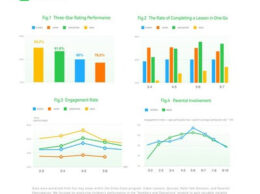LONDON : New data from Generation, a global employment non profit, spanning seven countries reveals midcareer workers confront accelerating barriers to employment and suggests interventions to improve their job prospects
Ageism is rampant. Although global employers say their age 45+ hires perform as well—or better — than younger employees, they acknowledge that during the recruiting stage, hiring managers believe age 45+ candidates will struggle to learn new skills, try new technologies, and fit in with company culture
Employers and employees value training to enable career switching, but unemployed age 45+ individuals who face the most financial and education challenges are the most hesitant to pursue training
Today, the global employment nonprofit organisation Generation publishes Meeting The World’s Midcareer Challenge, a research report based on a survey of 3,800 employed and unemployed people, and 1,404 hiring managers to reveal global employment trends.
The report sheds light on the reality of the jobs market for those aged 45-60 in seven countries – Brazil, India, Italy, Singapore, Spain, the United Kingdom, and the United States – with a particular focus on those seeking or working in entry-level and intermediate roles with no formal post-secondary educational background and low income levels. The findings highlight the stark unemployment challenges faced by midcareer workers across the world, offering insight into why they struggle.
These trends existed before the pandemic, but this research also demonstrates that COVID-19 has harmed employment opportunities and worsened employment conditions for midcareer workers. 37% of those switching jobs in their midcareer and over 50% of those seeking work, say that COVID-19 has had a major impact on their employment status.
Employers view age 45+ job candidates as having weaker skills relative to younger candidates, despite age 45+ employees at the same company having equal or better on-the-job performance to their younger job peers.
The survey shows that people age 45+ face persistent and rising pressure in the global job market, and their age is one of the greatest barriers to their finding a job, with 71% of current seekers seeing their age as a major obstacle. Those from underrepresented communities face even greater hurdles: they engage in 53 percent more interviews than their peers to get a job offer.
The research also finds strong evidence that perceptions of ageism are well-founded. Hiring managers hold negative perceptions of age 45+ job candidates, stating that only 17% are application ready, 18% have relevant skills or experience, and 15% have the right fit with company culture.
However, these perceptions are disconnected from reality, and the same hiring managers who expressed concerns about midcareer candidates acknowledge that 87% of their age 45+ hires perform on the job as good as, or better, than younger employees. The research also finds that hiring managers say that 90% of their age 45+ employees have as much or more potential to stay with a company over the long term in comparison to younger peers.
Employers and employees alike value reputable training, but the midcareer job seekers age 45+ who need it the most are hesitant to pursue it.
The survey shows that training works: across the seven countries, 74% of midcareers who have successfully switched to a new career see the skills they learned in training as being instrumental in securing new jobs. And 3 in 4 employers point to training and certifications as providing the equivalent of relevant experience when hiring.
Yet, the age 45+ unemployed whose job prospects would most benefit from training are the most hesitant to pursue it; 57% express reluctance and only 1% say that training increases their confidence while looking for jobs. This group of age 45+ job seekers would most benefit from training — 70% of them struggle to meet daily needs and 63% have a secondary school education or less. Possible reasons for this belief include the perception that training is a luxury they can’t afford or negative past experiences with formal education.
Key recommendations:
Solving the challenges that face midcareer job seekers and workers will require a number of initiatives. The report proposes four starting points.
Improving national and global employment statistic tracking and reporting to reflect narrower age brackets that better illuminate the unique issues faced by the 45+ population.
Linking training programmes directly to employment opportunities and providing stipends to support age 45+ individuals who are hesitant to engage in training.
Changing hiring practices to suppress potential age biases and better assess the potential of age 45+ job candidates by allowing them to show their skills through demonstration-based exercises.
Rethinking current employer training approaches to make it easier to fill new roles with existing age 45+ employees, versus relying solely on new hires.
Mona Mourshed, Global CEO of Generation, said: “Hearing employers that have hired job-seekers aged 45 and above say that those workers tend to outperform their younger counterparts is encouraging, but also accentuates the tragedy of today’s employment landscape.
“We tapped into the voices of midcareer job seekers and workers in seven of the countries in which Generation runs programmes to inform this powerful report. We hope this new research spurs governments and employers alike to take steps to counter rampant agesim and to include this forgotten age-group in their recovery efforts.”
The specific problem of midcareer unemployment has received little attention globally. This research marks a pivotal point for Generation, the global nonprofit that has placed over 43,000 people in fulfilling careers over the past 6.5 years. In 2018, Generation expanded its programs from youth to include midcareer individuals; and, it has served ~900 midcareers to date. Working across 14 countries and 30 professions, Generation places 83% of graduates in jobs within three months of program completion and is committed to helping employers to recruit midcareer candidates.
The survey, commissioned by Generation, took place between March and May 2021. The 3,800 respondents spanned both employed and unemployed people aged 18 to 60. The survey classed respondents either as seekers or switchers. Seekers are those that were carers, unemployed or employed part-time and looking for full-time entry-level or intermediate roles. Switchers were midcareer individuals who are currently employed full-time, having been employed in an entry-level or intermediate job in a new sector within the past three years.
For the perspective from hiring managers, the survey reached 1,404 respondents across Brazil, India, Italy, Singapore, Spain, the United Kingdom, and the United States. All hiring managers were responsible for recruiting entry-level or intermediate job applications, having done so at least three times in the past year and having hired at least one midcareer switcher in the past three years.








